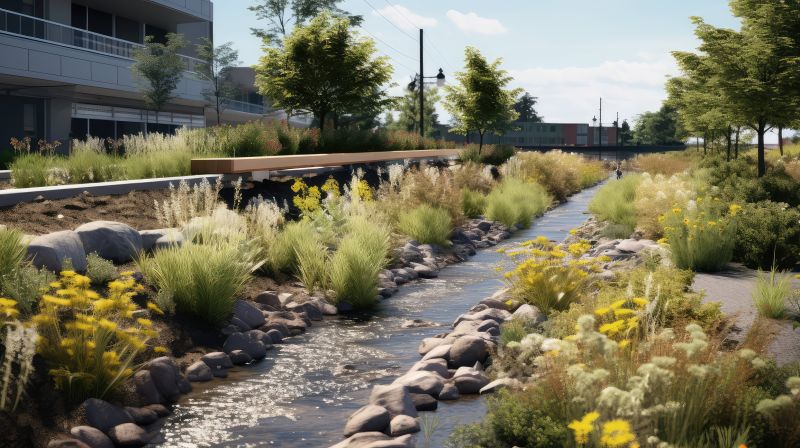Leading Products For Landscape And Drainage Service Professionals
Discover essential tools and equipment that enhance efficiency and quality in landscape and drainage projects for experts.
 Landscape and drainage service projects require a variety of specialized products to ensure proper water management, soil stability, and aesthetic appeal. From drainage pipes that direct excess water away from foundations to erosion control products that prevent soil loss, selecting the right tools and materials is essential for successful landscape maintenance. These products help manage runoff, prevent flooding, and promote healthy plant growth by maintaining optimal soil conditions.
Landscape and drainage service projects require a variety of specialized products to ensure proper water management, soil stability, and aesthetic appeal. From drainage pipes that direct excess water away from foundations to erosion control products that prevent soil loss, selecting the right tools and materials is essential for successful landscape maintenance. These products help manage runoff, prevent flooding, and promote healthy plant growth by maintaining optimal soil conditions.
Top Overall Option
Flexible Perforated Drainage Pipe System
A versatile and adaptable drainage pipe system designed to efficiently redirect excess water away from landscape areas. Its flexible construction allows for easy installation in various terrains, making it suitable for both small and large-scale projects. This type of drainage pipe is often used in conjunction with gravel beds and landscape fabric to optimize water flow and prevent soil erosion.
Types of Products For Landscape And Drainage Service
Perforated Drainage Pipes
Designed to collect and redirect groundwater, these pipes are essential for effective drainage systems in landscapes and foundations.
Landscape Fabric
A permeable material used to stabilize soil, prevent weed growth, and support drainage layers.
Gravel and Crushed Stone
Used as a base layer around drainage pipes to facilitate water flow and provide stability.
Erosion Control Blankets
Protects soil from erosion during heavy rainfall and helps establish vegetation.
Drainage Catch Basins
Collects surface runoff and directs it into underground drainage systems.
Flexible Drainage Channels
Preformed channels that can be installed to manage surface water flow efficiently.
Soil Stabilization Products
Materials that improve soil cohesion and reduce erosion in sloped areas.
Pipe Connectors and Fittings
Components used to join multiple drainage pipes securely for customized layouts.
Subsurface Drainage Systems
Underground solutions to manage water accumulation beneath the surface.
Waterproof Membranes
Barrier materials used to prevent water infiltration in critical areas.
Drainage Pumps
Electric pumps used to remove accumulated water from basements or low-lying areas.
Flexible Hoses and Connectors
Accessories for directing water flow and connecting various drainage components.
Popular Choices
Commonly used for residential drainage projects, these pipes offer flexibility and ease of installation.
Pre-filled gravel-filled bags that simplify erosion control and drainage management.
Surface water collection units designed for high-traffic areas and large drainage needs.
Universal fittings that allow for quick and secure pipe connections.
Matting materials used to protect slopes and disturbed soil from erosion.
Grates that cover drainage openings and prevent debris from clogging the system.
Adjustable and easy-to-install drainage components suitable for various landscape configurations.
Underground piping systems designed to manage water flow beneath the surface.
Preformed channels for directing surface water away from structures and walkways.
Tools to assist in maintaining proper slope during installation for optimal drainage.
Lightweight barriers that conform to terrain to prevent soil displacement.
Effective drainage solutions often involve a combination of components such as perforated pipes, gravel beds, and specialized filters that work together to facilitate water flow while preventing blockages. Additionally, landscape fabric can be used to stabilize soil and prevent weed intrusion, supporting long-term landscape integrity. For larger projects, heavy-duty equipment and installation accessories are necessary to ensure proper placement and durability.
When planning a landscape or drainage project, it is important to consider the specific site conditions, including soil type, slope, and water flow patterns. Proper assessment helps determine the most suitable products and configurations. Investing in quality materials and tools can lead to more efficient installation, reduced maintenance, and better overall results. Whether addressing a small garden bed or a large commercial site, the right products can make a significant difference in the project's success.
Overall, understanding the variety of available products and their purposes allows landscape professionals and DIY enthusiasts alike to make informed choices. By selecting appropriate drainage systems, erosion control products, and landscape accessories, users can create functional, attractive outdoor spaces that stand the test of time. Careful planning and the right product selection are key to achieving effective water management and maintaining the health and stability of landscaped areas.
Key Buying Considerations
- Assess the specific water drainage needs of the site, including flow volume and direction.
- Choose materials compatible with soil type and landscape conditions to ensure durability.
- Consider the size and diameter of pipes to match the scale of water flow and project scope.
- Evaluate the ease of installation, especially for DIY projects, and whether specialized tools are required.
- Look for products with appropriate permeability to facilitate water movement while preventing soil infiltration.
- Ensure proper slope and positioning to optimize drainage efficiency and prevent pooling.
- Select erosion control products suitable for the slope and expected rainfall intensity.
- Verify compatibility of fittings and connectors to allow seamless system assembly.
- Consider the longevity and maintenance requirements of different materials and components.
- Determine whether underground or surface drainage solutions are more appropriate for the application.
- Review product dimensions and coverage to ensure complete and effective coverage of the area.
- Factor in local building codes or regulations related to drainage and landscape modifications.
- Choose products that can handle the expected water load without clogging or failure.
- Assess the environmental conditions, such as freeze-thaw cycles, which may impact material performance.
- Evaluate the availability of replacement parts or additional components for future upgrades or repairs.
